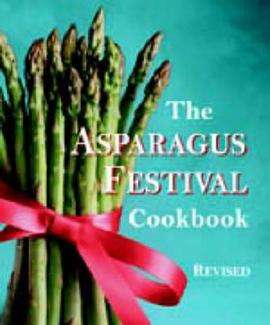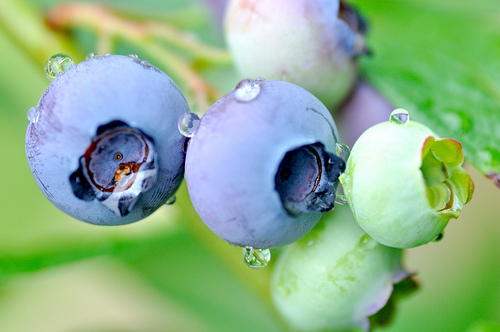Editors note: Between this article and reading Barbara Kingsolver’s discussion of asparagus in Animal, Vegetable, Miracle, A Year of Food Life, I am determined that I will be growing asparagus in my garden very soon!
If you like Asparagus, you are not alone. It may surprise you though, to know that you will be eating a member of the lily family, however these shoots have been popular for at least 2,000 years.
Believed to have medicinal properties, asparagus is a native of the Mediterranean and was widely sought after by the Greeks and Romans. Even Benjamin Franklin is known to have grown Asparagus and Louis XIV from France ordered his gardeners to construct greenhouses so he could eat it throughout the year, thus confirming its international appeal.
It is not hard to grow and will reward you for years to come. In the balance of this article you will learn how to do just that.
Preparation is key
 Although asparagus can grow in a variety of soil types, it must have good drainage. It prefers a soil pH of between 6.3 and 7.5 which needs a thorough deep digging together with organic composting before planting.
Although asparagus can grow in a variety of soil types, it must have good drainage. It prefers a soil pH of between 6.3 and 7.5 which needs a thorough deep digging together with organic composting before planting.
A good tip is to make sure it is weed free as the dense nature of asparagus makes weeding very difficult afterwards. A raised bed is ideal especially if you have clay soils as this will aid drainage. Although there is a choice between seeds and crowns, most people will prefer planting crowns as it will save a year of waiting, but it is a more expensive choice.
In Australia crowns are readily available from quality nurseries. Preparation is best done in autumn.
Aspect
Asparagus can grow quite high (up to 1.5m/ 5’) and since they will become a permanent feature in the garden, their location is quite important, particularly in a home garden. It is therefore often used as borders or hedges.
Because of its height, it may be better suited towards the rear of your block, however you also need to ensure it receives full sun or it will not grow properly.
Be careful of frost as this will kill young shoots. Some sacking can be used each year when you expect frosts or snow to prevent this.
Planting guide
Asparagus produces both male and female varieties. Both produce edible shoots but the females will produce berries which detract from quality production. Since the male plants are more productive and it is possible to buy all male crowns or seeds, these are preferred.
Before planting crowns in spring, soak them in clean water for about 15 minutes. If you do have to store them for a while, you can keep them in the fridge and give them an occasional misting of water.
The crowns are then best planted on a mound within a trench approximately 3.5cm (8”) deep, and 30cm (12”) wide. Add some manure/compost to the bottom of the trench and add some soil on top of that to form the mound.
Next lay out the roots of the crowns which should be spaced about 45cm (18”) apart. Allow at least 45-60cm (18-24”) between rows.
Fill the trench in and keep well weeded. The beds should be kept moist but definitely not soggy and water is especially important when they are actively growing.
Growing from seed is cheaper. It also avoids crowns failing from root shock which does occur – in fact it is normal to expect up to 15% loss when using crowns. There is a much higher survival rate of from seeds which can be sown directly or translated from pots.
These can be sown while ground conditions are still warm in autumn, and buried about 5cm (2”) deep in rows of 30-45cm (12-18”) apart. Once they are about 15cm (6”) high they can be thinned to around 45cm (18”) apart. They need to be kept moist while growing.
Harvesting

You have to wait two years before harvesting (three years from seed) . That does not mean you won’t get shoots, but resist the urge and let these die back in autumn.
On the flip side though your crop will keep coming up for anywhere from 15- 25 years!
They are best harvested in spring but not summer. Let your asparagus have its way in summer and keep growing its shoots. Over harvesting means that next year’s crop may be poor.
Pick them when they are 15-20cm (6-8”) long and while the tops are tight.
To cut them without destroying the crown, it is best to cut just below the surface (5cm or 2” as a guide).
In the first year of harvest, only cut for a maximum of two weeks. Your plants will pay you back in later years, and you will be able to cut from your fully mature plants for a good eight weeks. The balance of the stalks can then be cut just before going to seed in early autumn (fall).
Don’t forget to add new mulch each year and look forward to the next spring harvest.
Companions
It is thought that asparagus and tomato plants do well together as does parsley. Each helps to ward off pests from the other.
Issues
Asparagus is easily capable of being grown organically as it is a vegetable that is relatively free from pests and diseases. It can suffer from rot hence the need for excellent drainage.
Your local nursery will be able to advise the best varieties for your area and will consider your local soil types as well as climate. They need to be kept clear of snails and slugs and can suffer from thrips. In the latter case a pyrethrum based organic spray can be used.
David Bay is a part time freelance writer living in Perth, Western Australia.





Oh wow, I just ate some fresh asparagus grown by a friend (I still haven’t got any of my own growing), and it was the best asparagus I have ever eaten. So sweet and delicious. And it had purple skin! You don’t see that in the supermarket!
Oh wow, I just ate some fresh asparagus grown by a friend (I still haven’t got any of my own growing), and it was the best asparagus I have ever eaten. So sweet and delicious. And it had purple skin! You don’t see that in the supermarket!